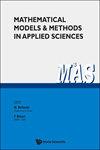The perception of Congolese refugees in Burundi of the recommended durable solutions for them
IF 3
1区 数学
Q1 MATHEMATICS, APPLIED
Mathematical Models & Methods in Applied Sciences
Pub Date : 2023-01-01
DOI:10.12988/ams.2023.917335
引用次数: 0
Abstract
Burundi started to receive refugees during the colonial period in 1959. These were Rwandan refugees who were fleeing massacres in their country. Since then, the reception of refugees has never stopped and Burundi currently has 84,961 refugees, most of whom come from the Democratic Republic of Congo. This is a very large number of people, considering the size of Burundi and its population. These refugees come from the east of the Democratic Republic of Congo and are fleeing the insecurity caused by the armed groups that are multiplying there. This work is the result of field visits to the five refugee camps in Burundi, which resulted in a total of 90 interviews. The sample included both men and women, taking into account their social status, vulnerability, and seniority (former and new refugees). To collect the data, we used a voice recorder and a notebook at our disposal in which we put some details that needed clarification. We used Word, Excel, and SPSS to process the data. The analysis of these interviews shows the difficulties of the life of these refugees. The objective of this study is to analyze refugees' perception of durable solutions to their problem of exile. As these refugees do not expect to return home, most of them turn to resettlement. Only 37.8% have been selected for resettlement. Naturalization and repatriation, two other durable solutions, are not part of the choice of these refugees who are looking toward resettlement.布隆迪境内刚果难民对建议的持久解决办法的看法
布隆迪在1959年殖民时期开始接收难民。这些是逃离卢旺达境内大屠杀的卢旺达难民。自那时以来,难民的接收从未停止,布隆迪目前有84 961名难民,其中大多数来自刚果民主共和国。考虑到布隆迪的面积和人口,这是一个非常大的数字。这些难民来自刚果民主共和国东部,正在逃离武装团体在那里成倍增加所造成的不安全局势。这项工作是实地访问布隆迪境内五个难民营的结果,共进行了90次面谈。样本包括男性和女性,考虑到他们的社会地位、脆弱性和资历(前难民和新难民)。为了收集数据,我们使用了一个录音机和一个笔记本,我们在笔记本上记录了一些需要澄清的细节。我们使用Word, Excel, SPSS对数据进行处理。对这些访谈的分析显示了这些难民生活的困难。本研究的目的是分析难民对持久解决其流亡问题的看法。由于这些难民不期望返回家园,他们中的大多数人转向重新安置。只有37.8%的人被选中安置。归化和遣返是另外两种持久的解决办法,这些寻求重新安置的难民并没有选择这些办法。
本文章由计算机程序翻译,如有差异,请以英文原文为准。
求助全文
约1分钟内获得全文
求助全文
来源期刊
CiteScore
6.30
自引率
17.10%
发文量
61
审稿时长
1 months
期刊介绍:
The purpose of this journal is to provide a medium of exchange for scientists engaged in applied sciences (physics, mathematical physics, natural, and technological sciences) where there exists a non-trivial interplay between mathematics, mathematical modelling of real systems and mathematical and computer methods oriented towards the qualitative and quantitative analysis of real physical systems.
The principal areas of interest of this journal are the following:
1.Mathematical modelling of systems in applied sciences;
2.Mathematical methods for the qualitative and quantitative analysis of models of mathematical physics and technological sciences;
3.Numerical and computer treatment of mathematical models or real systems.
Special attention will be paid to the analysis of nonlinearities and stochastic aspects.
Within the above limitation, scientists in all fields which employ mathematics are encouraged to submit research and review papers to the journal. Both theoretical and applied papers will be considered for publication. High quality, novelty of the content and potential for the applications to modern problems in applied sciences and technology will be the guidelines for the selection of papers to be published in the journal. This journal publishes only articles with original and innovative contents.
Book reviews, announcements and tutorial articles will be featured occasionally.

 求助内容:
求助内容: 应助结果提醒方式:
应助结果提醒方式:


